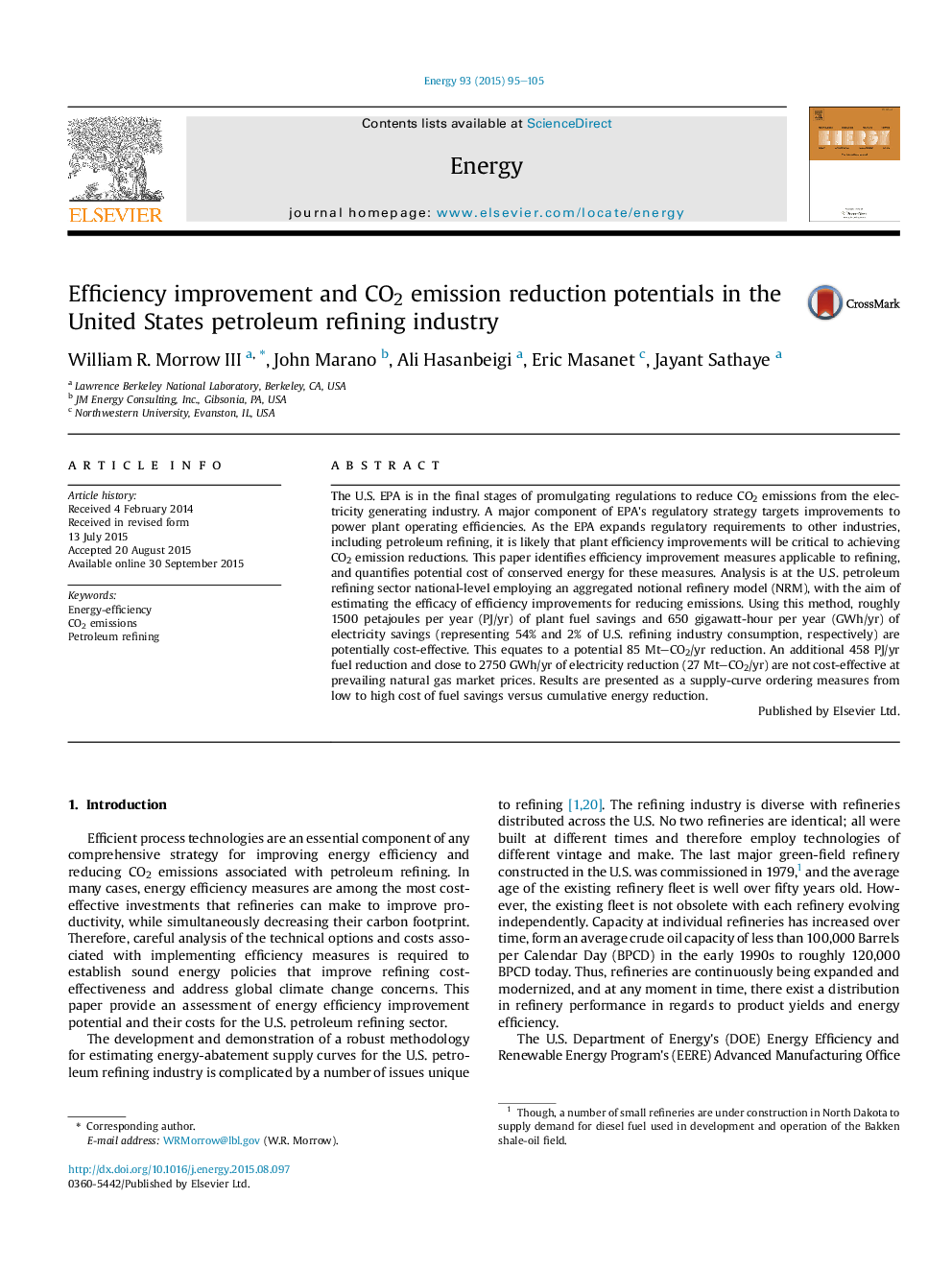| Article ID | Journal | Published Year | Pages | File Type |
|---|---|---|---|---|
| 1731075 | Energy | 2015 | 11 Pages |
Abstract
The U.S. EPA is in the final stages of promulgating regulations to reduce CO2 emissions from the electricity generating industry. A major component of EPA's regulatory strategy targets improvements to power plant operating efficiencies. As the EPA expands regulatory requirements to other industries, including petroleum refining, it is likely that plant efficiency improvements will be critical to achieving CO2 emission reductions. This paper identifies efficiency improvement measures applicable to refining, and quantifies potential cost of conserved energy for these measures. Analysis is at the U.S. petroleum refining sector national-level employing an aggregated notional refinery model (NRM), with the aim of estimating the efficacy of efficiency improvements for reducing emissions. Using this method, roughly 1500Â petajoules per year (PJ/yr) of plant fuel savings and 650Â gigawatt-hour per year (GWh/yr) of electricity savings (representing 54% and 2% of U.S. refining industry consumption, respectively) are potentially cost-effective. This equates to a potential 85Â Mt-CO2/yr reduction. An additional 458Â PJ/yr fuel reduction and close to 2750Â GWh/yr of electricity reduction (27Â Mt-CO2/yr) are not cost-effective at prevailing natural gas market prices. Results are presented as a supply-curve ordering measures from low to high cost of fuel savings versus cumulative energy reduction.
Related Topics
Physical Sciences and Engineering
Energy
Energy (General)
Authors
William R. III, John Marano, Ali Hasanbeigi, Eric Masanet, Jayant Sathaye,
